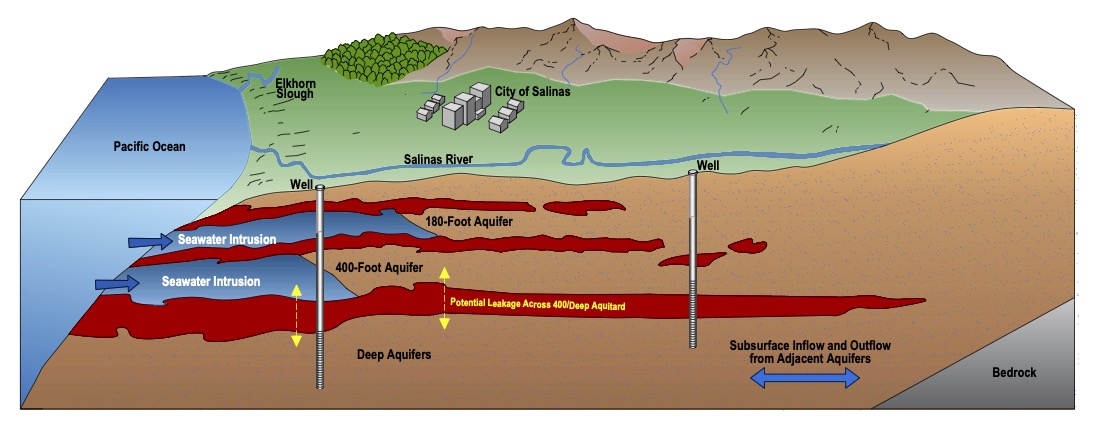Seawater intrusion is a concern for many coastal communities in California, particularly for those who rely on groundwater.
Seawater intrusion happens when ocean water moves into freshwater aquifers, which are underground layers of water-soaked rocks and sand. These aquifers are a critical source of fresh water, especially in coastal areas.
Groundwater pumping has lowered groundwater elevations to a point that allows seawater to flow inland from the Monterey Bay. When too much fresh water is drawn from aquifers for uses like irrigation, drinking, and industrial processes, the balance between coastal fresh groundwater aquifersand the ocean is disturbed. This imbalance allows seawater to flow into the aquifers, where fresh water is being overdrafted.
The intrusion of seawater can have several negative impacts:
Water Quality
The most immediate effect is the deterioration of water quality. Seawater is salty and not suitable for drinking or most agricultural uses without costly desalination.
Agriculture
For areas dependent on groundwater for irrigation, seawater intrusion can damage crops that are sensitive to salt.
Water Supply
Over time, seawater intrusion can reduce the amount of available fresh water, leading to shortages.
Seawater intrusion in the coastal areas of the northern Monterey County area was first detected as early as the 1930s and has continued since, now extending close to seven miles inland at the furthest extent of the intruded area. This has led to declining groundwater levels and salt intrusion, which are major concerns. In response, the Monterey County Water Resources Agency (MCWRA) constructed the Nacimiento Dam in 1957 and the San Antonio Dam in 1965 to control floods and enhance groundwater recharge, aiming to mitigate seawater intrusion.
Additionally, in 1998 MCWRA constructed the Monterey County Water Recycling Projects, which consist of the Salinas Valley Reclamation Project and the Castroville Seawater Intrusion Project (CSIP) to deliver recycled water for irrigation. The Salinas River Diversion Facility was brought online in 2010 to augment water supplies for CSIP. Monterey One Water helps to operate these projects. CSIP helps to reduce groundwater pumping and slow the rate of seawater intrusion.
The Seawater Intrusion Library shares reports, maps and other resources about this issue.

